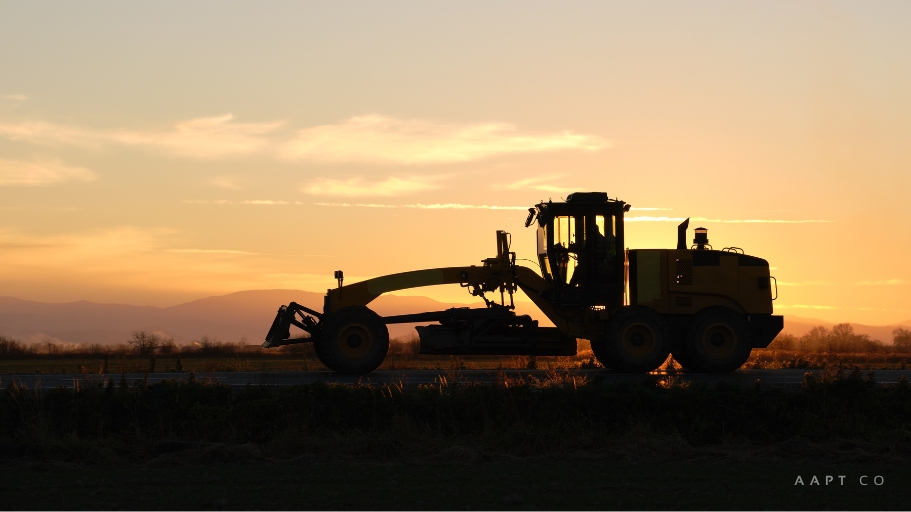The Power of Planning – Five Strategies for Seamless Heavy Equipment Moves

Professional movers know that a solid plan is the foundation of efficient machine transportation. This article discusses the power of planning and five effective strategies for seamless heavy equipment moves.
Planning is an essential activity in a business. It has many benefits, including facilitating effective control by establishing standards against which to compare actual results and taking corrective action as needed.
1. Pre-Planning
Having a well-defined plan can make all the difference during the equipment transportation process. By setting a schedule and ensuring that all parties involved understand the process, it can prevent unforeseen issues from occurring and minimize disruptions to production operations.
Oftentimes, companies hire industrial moving services to move large pieces of equipment from one location to another. This can be due to a variety of reasons, including relocation, expansion, or a desire to streamline processes. It may also be necessary for maintenance purposes or to ensure that equipment is operating at peak efficiency.
Heavy equipment transport is a complex task that requires a great deal of know-how. There are a lot of things to keep in mind, such as weight limitations, dimensions, and route restrictions. It is essential to prepare the equipment and select the right trailer before making the drive, which can reduce the likelihood of accidents and delays.
The benefits of pre-planning are vast and far-reaching. It allows for a more comprehensive evaluation of the project and its associated costs. It also helps to ensure that all key stakeholders have an opportunity to participate and offer input into the final plan.
In the case of funeral and burial arrangements, pre-planning can help to relieve stress from next-of-kin, family, and friends, by allowing them to express their wishes and preferences. It can also save time and money when compared to planning after an individual’s death.
For those preparing for a move, it is a good idea to start packing off-season items and items that will be rarely used in advance. This will help to cut down on the amount of work required on the day of the move, as well as reduce the chances of something getting lost or damaged in transit.
2. Planning for the Unexpected
Planning involves the process of examining alternative courses of action. It also involves making decisions based on available information. This requires a great deal of time and effort to collect authentic data, analyze it, and forecast future conditions. It is often a costly exercise for an organization as it requires the assistance of experts.
The primary function of management is planning and setting objectives. This is an ongoing activity as businesses face new challenges every day. It is important to be able to anticipate problems that may arise and take precautions to avoid them.
Unexpected events can derail the best-laid plans. They can occur at any time, so it’s crucial that they are taken into consideration and accounted for during the planning process. This can be achieved through a variety of methods, including risk assessment and mitigation, disaster recovery, and contingency planning.
It’s important to consider the environmental conditions of the equipment’s current location and its final destination. This is because the weather and terrain of each area can have a significant impact on the journey. By factoring in these factors, you can plan accordingly and ensure the safety of your employees.
However, the biggest challenge in effective planning is the tendency of managers to rely on previous successful experiences. This is a dangerous practice because it creates a false sense of security and complacency, which can lead to failure. Moreover, it discourages individual initiative and creativity. It is essential to have a team of individuals at all levels who understand the importance of the planning process and work together to achieve the desired results. This will also help minimize any duplication of duties and responsibilities, which can be costly to the organization.
3. Communication
One of the most important aspects of moving heavy equipment is having clear and effective communication. This ensures that all workers are on the same page and helps to prevent confusion or mishaps during the move. If you are experiencing issues with team communication, it is worth looking at ways to improve it to help everyone work more efficiently.
The first step in planning is determining objectives, which are statements of what needs to be achieved and when. The next step is identifying alternative courses of action and evaluating these alternatives to determine which ones will best achieve your objective. Finally, the last step in the planning process is determining necessary steps and ensuring their effective implementation.
Planning requires that managers be aware of environmental conditions and attempt to forecast future conditions. It also requires that the manager choose from several alternative plans of action and evaluate these alternatives to select the best plan. It is, therefore, essential that the managers are good decision-makers.
Another function of the management is to set the direction of the company and ensure that goals are met. The planning process helps the manager do this by establishing a structure and defining responsibilities for the organization.
It is also vital to have a participatory planning process so that all key stakeholders are involved and committed to the decisions made. This is important for a number of reasons, including building the commitment to the decisions that have been made and allowing the organization to draw on different ideas and experiences. For more information on this, see the section on planning systematically. You can also find advice on how to use the basic planning steps by clicking the headings for each step.
4. Keeping an Eye on the Budget
When moving heavy equipment, it is important to keep an eye on the budget. This is especially true when considering the amount of time needed to dismantle and pack machinery for transport. Having an accurate budget can help you avoid overspending and ensure that you are spending money on equipment that is necessary for your business.
Having a budget can also help you determine how much it will cost to operate the new equipment once it is moved into place. This will allow you to make informed purchasing decisions about your heavy equipment.
It is also important to consider any maintenance requirements that may be required after the move. Having this information on hand will make it easier to schedule maintenance in advance of the relocation. This will help you save money by avoiding any unnecessary repairs and ensuring that your machinery is in good condition for the move.
Another important element of the planning process is determining how you will evaluate your progress and successes. This should be included in the planning process so that everyone has a clear understanding of what success means and how you will measure it. Guidance on how to do this can be found in the section on Preparing to Plan.
Power and inequality are realities that planners must address in their practical work. This book articulates the cutting-edge contemporary understandings about how these relate to planning and identifies emerging trajectories in this area of research. It offers a systematic reformulation of the politics of professional practice and demonstrates how effective, public-serving planners can overcome the traditional but paralyzing dichotomies of being either professionally neutral or politically driven, detached and distantly rational or engaged and change-oriented.
5. Keeping an Eye on the Schedule
When moving equipment, it’s essential to keep an eye on the schedule. This will ensure that all of the tasks are completed in a timely manner and that there are no issues or delays. In addition, it will help to prevent any safety threats by clearly defining the roles and responsibilities of each team member. For example, one person can be in charge of signaling the driver to stop the vehicle, while another person can be responsible for loading the machinery onto the truck. By having clear roles and responsibilities, employees can better focus on their duties and minimize distractions.
Another benefit of keeping an eye on the schedule is that it will help you to plan for any additional resources or tools you may need. For instance, if you are planning to use a crane for the move, you’ll want to make sure that you have the proper lifting straps and harnesses available. This will help to distribute the weight of the machinery evenly, and it will also reduce the risk of injury.
Additionally, it’s important to be aware of any limitations or restrictions that may apply to the location you are moving your equipment to. For example, if you’re moving oversized machinery, you might need to obtain a permit or clearance from the local authority before transporting it. In addition, it’s essential to check the environmental conditions of both the current and new locations, as this will impact your move.
As you can see, the power of planning is a powerful and effective business tool that can help to improve productivity and eliminate any potential obstacles that could come up during the process. In addition, by involving employees in the planning process, you can help them meet their personal and professional development needs while improving morale and employee engagement.
Most Inside
Most Inside offers high-quality recommendations and valuable updates to enhance all aspects of your life, providing premium guidance and enriching experiences.




